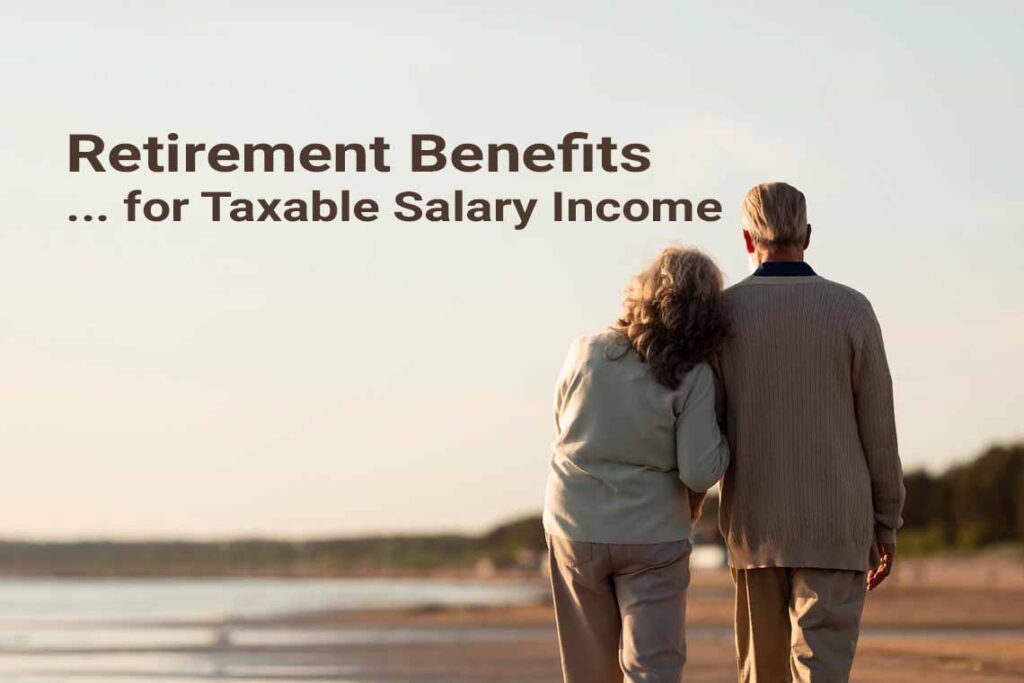Income from salaries is taxable under Sections 15-17 of the Income Tax Act, 1961. It includes all remuneration received by an employee from an employer in cash or kind, along with certain allowances and perquisites. Below is a structured guide on how to compute taxable salary income.
1. Components of Salary Income [Section 17(1)]
Salary includes:
✔ Basic Salary
✔ Dearness Allowance (DA) (if part of retirement benefits)
✔ Bonus/Commission
✔ Allowances (partially or fully taxable)
✔ Perquisites (monetary value of non-cash benefits)
✔ Employer’s Contribution to PF > ₹7.5 lakh/year (new Rule 3B)
✔ Leave Encashment (taxable for private employees, exempt for govt. employees)
✔ Gratuity (taxable beyond exemption limit)
✔ Pension
2. Step-by-Step Computation of Taxable Salary
Step 1: Calculate Gross Salary
| COMPONENT | TAXABILITY | REMARKS |
| Basic Salary | Fully Taxable | – |
| Dearness Allowance (DA) | Fully Taxable | If part of retirement benefits |
| House Rent Allowance (HRA) | Partially Exempt [Sec 10(13A)] | Least of:
· Actual HRA · 50% (Metro) / 40% (Non-Metro) of Basic + DA · Rent Paid – 10% of (Basic + DA) | |
- | Special Allowances (Transport, Medical, etc.) | Exempt up to limits [Sec 10(14)] | Transport Allowance (₹1,600/month for disabled) |
- | Leave Travel Allowance (LTA) | Exempt for domestic travel (twice in 4 years) | Only travel cost, not accommodation |
- | Bonus/Commission | Fully Taxable | – |
- | Perquisites (Company Car, Rent-Free Accommodation, etc.) | Taxable as per valuation rules | – |
Step 2: Deduct Exemptions
- HRA Exemption(if applicable)
- LTA Exemption(for actual travel bills)
- Standard Deduction (₹50,000)(for all salaried employees)
Step 3: Add Perquisites (Non-Cash Benefits)
✔ Rent-Free Accommodation:
- Employees:License fee deducted from salary
- Private Employees:15% of salary (or actual rent paid by employer)
✔ Company Car:
- Personal Use:Taxable (₹2,400/month for petrol car)
- Official Use:Exempt
✔ Interest-Free/Concessional Loans:
- Taxable if loan > ₹20,000 (SBI rate – actual interest charged)
Step 4: Include Retirement Benefits (if received)
| BENEFIT | EXEMPTION LIMIT |
| Gratuity | Least of:
· ₹20 lakh · 15 days’ salary × years of service · Actual received |
- | Leave Encashment| ₹25 lakh (lifetime) |
- | Pension| Fully taxable (if received) |
Step 5: Deduct Professional Tax (if paid, max ₹2,500/year)
Step 6: Final Taxable Salary = (Gross Salary – Exemptions + Perquisites – Standard Deduction – Professional Tax)
3. Tax Deducted at Source (TDS) on Salary
Employers deduct TDS under Section 192 based on:
✔ Taxable Salary (after exemptions)
✔ Employee’s Investment Declarations (80C, 80D, etc.)
✔ New vs. Old Tax Regime Choice
4. Key Changes (Budget 2024-25)
✔ Standard deduction increased to ₹75,000 (under new tax regime)
✔ No change in HRA/LTA exemptions
✔ Employer’s PF contribution > ₹7.5 lakh/year taxable (Rule 3B)
5. Example Calculation
Employee Details:
- Basic Salary: ₹10,00,000
- DA: ₹2,00,000
- HRA: ₹3,60,000 (Rent Paid: ₹4,80,000, Metro City)
- LTA: ₹40,000 (claimed for travel)
- Bonus: ₹1,00,000
- Employer’s PF Contribution: ₹1,20,000
Calculation:
- Gross Salary= Basic + DA + HRA + LTA + Bonus = ₹10L + ₹2L + ₹3.6L + ₹40k + ₹1L = ₹17L
- HRA Exemption= Least of:
-
- Actual HRA (₹3.6L)
- 50% of (Basic + DA) = ₹6L
- Rent Paid – 10% of (Basic + DA) = ₹4.8L – ₹1.2L = ₹3.6L
→ Exempt HRA = ₹3.6L
- Taxable Salary= ₹17L – ₹3.6L (HRA) – ₹40k (LTA) + ₹1.2L (PF > ₹7.5L) – ₹50k (Standard Deduction) = ₹13.3L

![[Section 89/Rule 21A]- Tax Relief](https://incometaxmanagement.in/wp-content/uploads/2023/09/Tax-Relief-under-Section-89-Rule-21A-1024x683.jpg)








![Perquisites [(Section 17(2)] for calculating Salary Income](https://incometaxmanagement.in/wp-content/uploads/2023/09/Perquisites-Section-172-1-1024x683.jpg)
